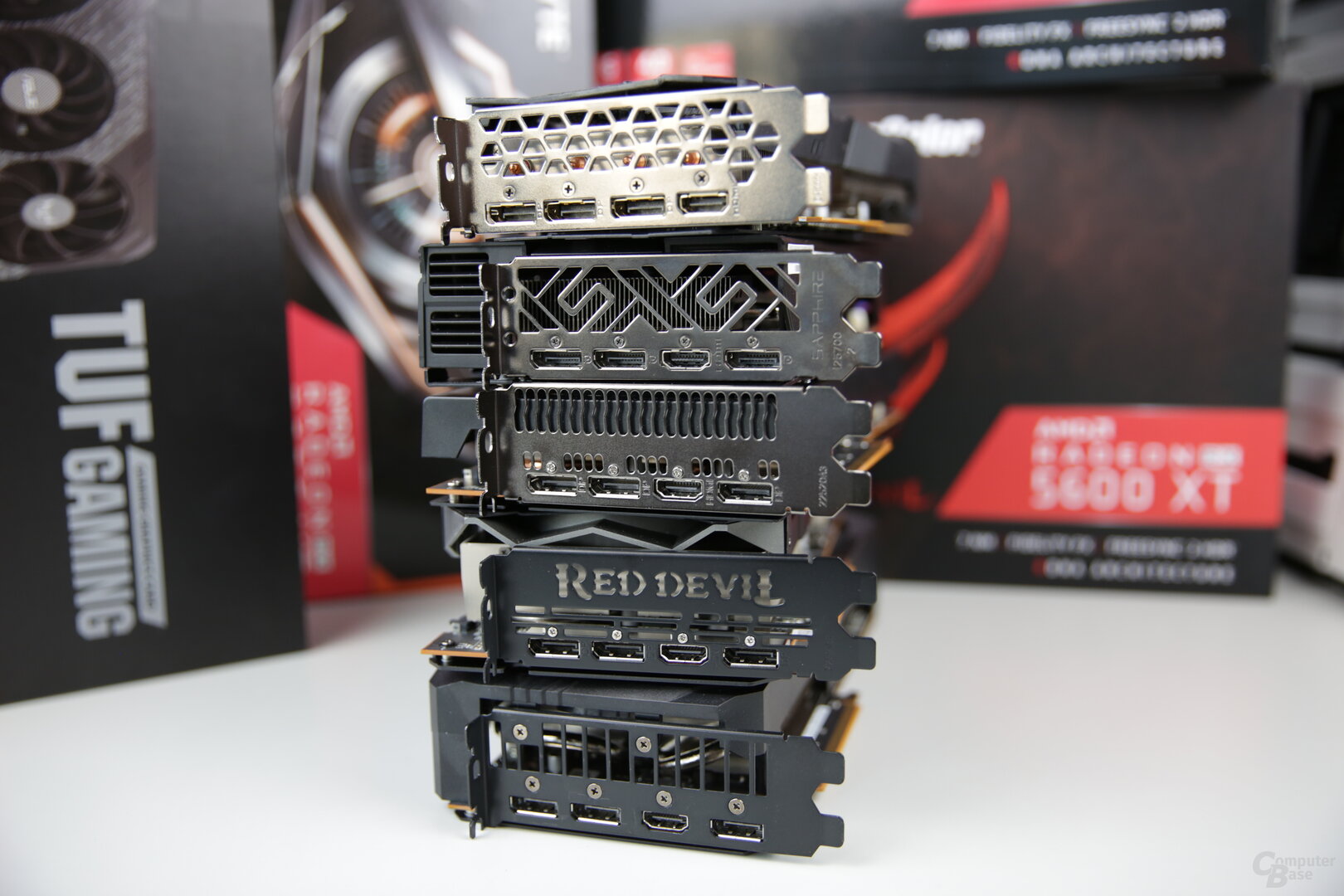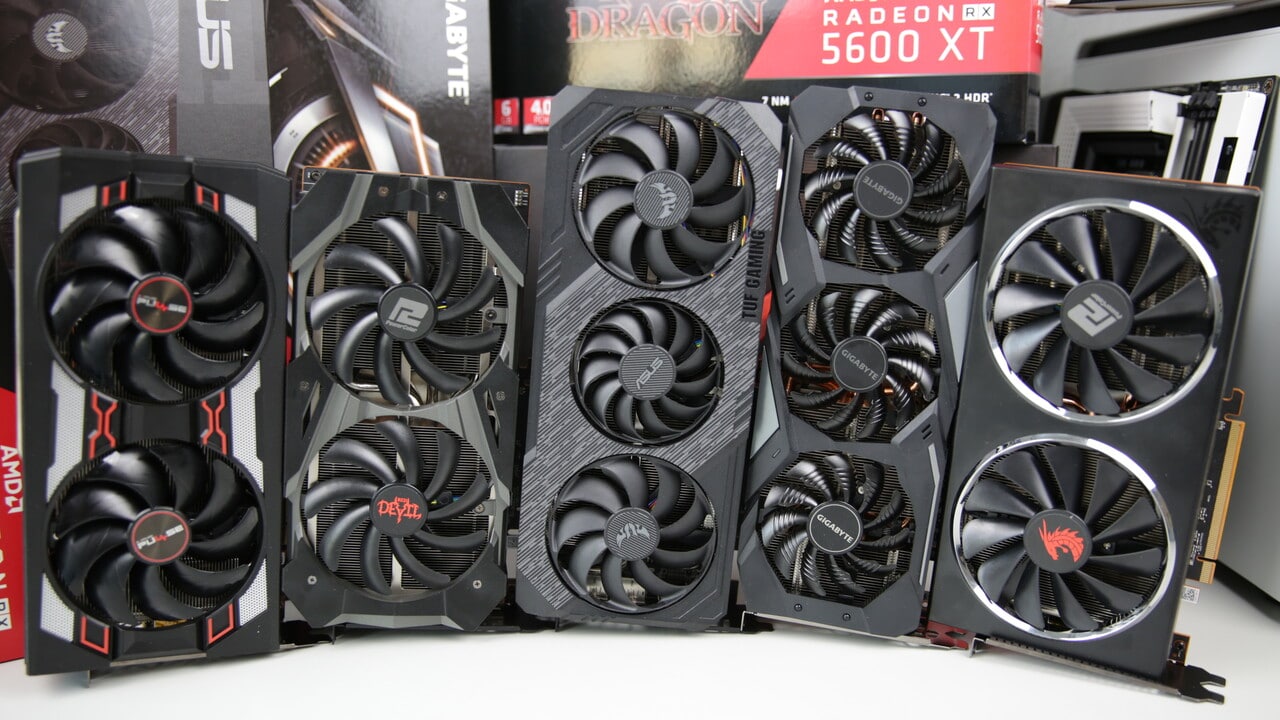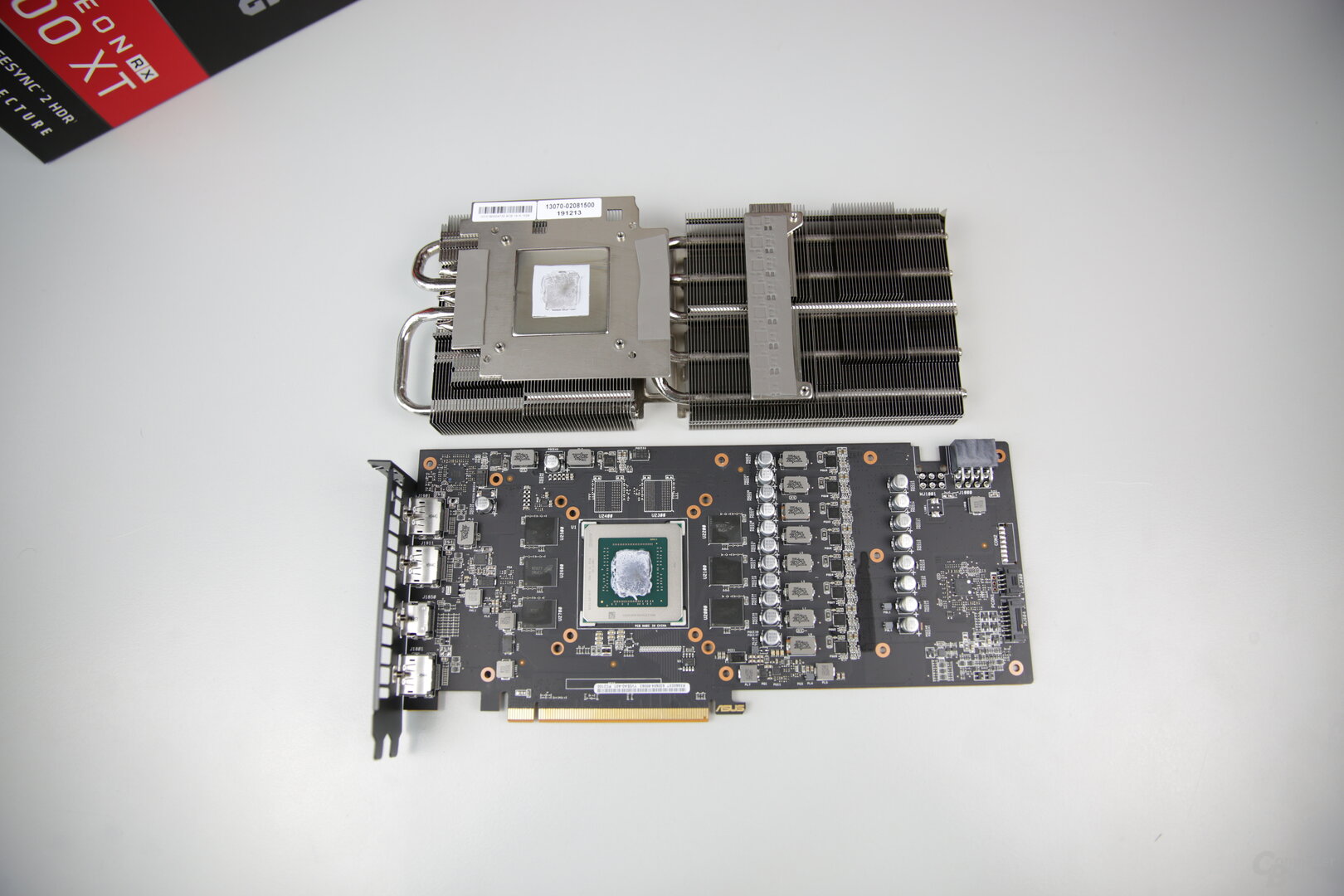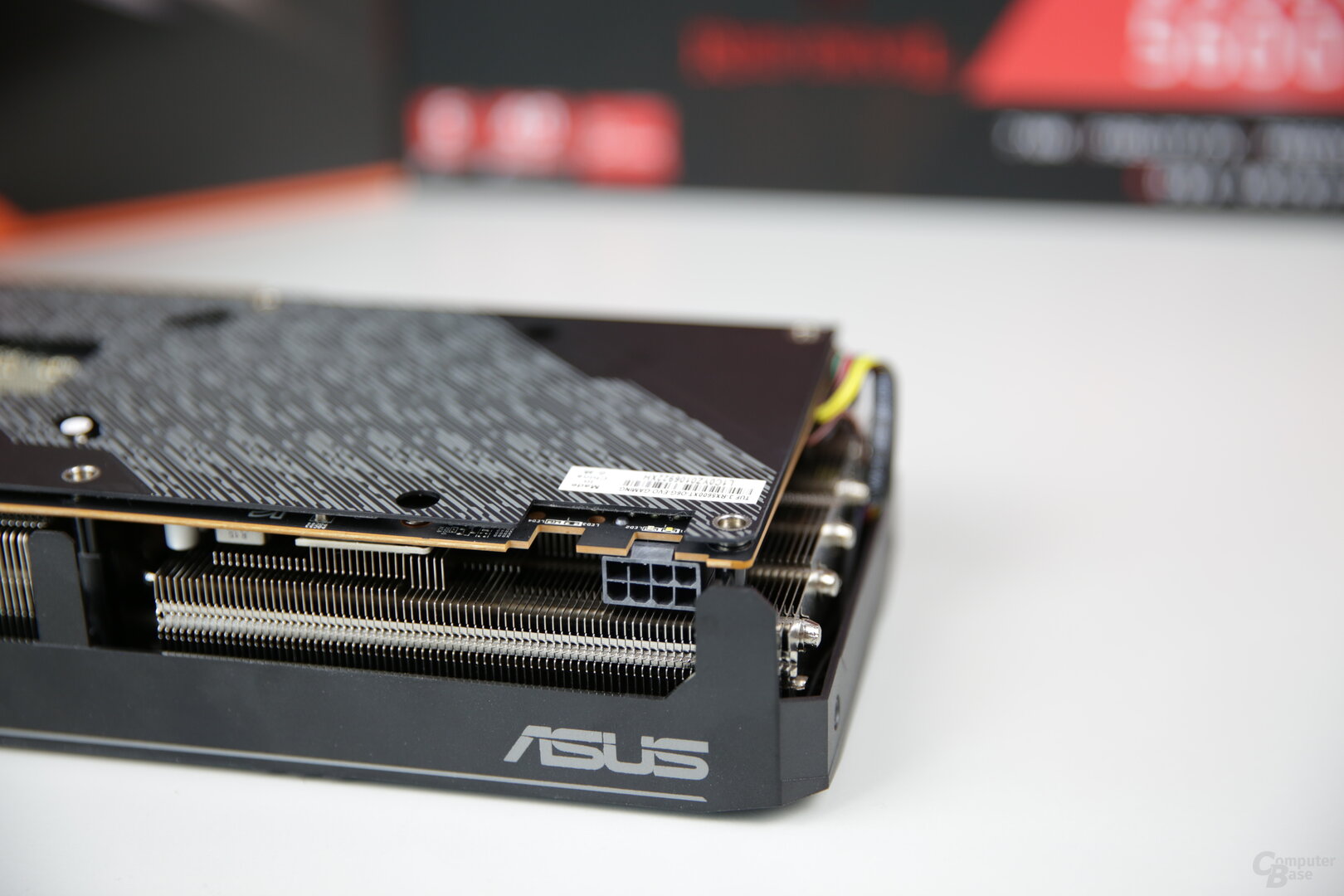– AMD's Radeon RX 5600 XT attacks the Nvidia GeForce RTX 2060 at the price point for 300 euros. The Sapphire Pulse was able to prove itself very well in the test. The comparison test shows whether Asus' TUF, Gigabytes Gaming OC as well as PowerColors Red Dragon and Red Devil can keep up. The BIOS was always up to date.
Even if the Radeon RX 5600 XT had a rather bumpy start due to the BIOS thumbscrews being loosened at the last second, which can also have tangible effects for early buyers, the change in the graphics card did a good job: With the new specifications, the latest GPS offshoot can Attack Nvidia GeForce RTX 2060.
There is no reference design, instead only custom designs of the board partners are on the shelves. Sapphire did more than just well with the Radeon RX 5600 XT Pulse, which was already tested at the start. The article uses four other custom models to clarify whether a competitor can still push past.
Custom designs from Asus, Gigabyte and PowerColor compared
The Asus Radeon RX 5600 XT TUF Evo OC, the Gigabyte Radeon RX 5600 XT Gaming OC and the PowerColor Radeon RX 5600 XT Red Dragon, which want to compete with the already tested Sapphire Radeon RX 5600 XT, came together for the test. In addition, the PowerColor Radeon RX 5600 XT Red Devil, and thus a kind of “premium light model”, is also involved.
You can tell that the Red Devil is supposed to be "Premium". Not necessarily the price, because the Radeon RX 5600 XT Red Devil is not the most expensive model in the test with 327 euros. The graphics card already looks optically higher than the assembled competition. In addition, it is the only custom design that offers full-blown RGB lighting and, with eight voltage converter circuits for the Navi 10 GPU, also the widest power supply.
Speaking of price: Asus sent the Radeon RX 5600 XT TUF Evo OC in the comparison and not the premium model of the Strix series. At 349 euros, however, it is still the most expensive custom design in the test. Asus justifies the costs, among other things, with an allegedly high durability and a quite potent cooler.
Gigabyte sends the 315 euro Radeon RX 5600 XT Gaming OC into the race and with it its own flagship, which is equipped with the well-known WindForce cooler. PowerColor is the second in the group to send the € 309, optically simple, yet chic Radeon RX 5600 XT Red Dragon, whose variant the Radeon RX 5700 was convincing.
4 × well-known, 1 × something new
Unsurprisingly, the custom designs of the Radeon RX 5600 XT are virtually all of the solutions already known from the Radeon RX 5700, on which some components have simply been replaced or left out and another BIOS was then installed. This also lends itself to the specimen and is quite positive, since, for example, the coolers are intended for the even higher load of the Radeon RX 5700. Four of the five models in the test are already "well known", but there is one exception.
PowerColor has further developed or developed the Radeon RX 5600 XT Red Devil, it has little in common with the Radeon RX 5700 (XT) Red Devil. So both the PCB and the cooling system are significantly shorter than the larger model, even if the optical style has remained. In addition, there are only two axial fans with a diameter of 95 mm, which differ significantly in shape and height from the larger brother. Four heat pipes and two relatively large cooling blocks ensure rapid heat transfer. The slot bezel, on the other hand, has remained the same, on which the "Red Devil" lettering will continue to be upside down in most ATX systems.
The three other models are much less exciting because you already know them – which also applies to the already tested Sapphire Radeon RX 5600 XT Pulse. The Asus Radeon RX 5600 XT TUF Evo OC uses a long PCB with an equally long cooler. Three axial fans, the middle one is smaller than the outer ones, provide fresh air.
The Gigabyte Radeon RX 5600 XT Gaming OC is comparably long, but significantly less bulky. The 2.5-slot wide and thus the large WindForce cooler is used, which uses three different-sized cooling blocks and three axial fans. The PowerColor Radeon RX 5600 XT Red Dragon uses the optically chic dual-slot cooler, which is significantly smaller, but quite high. The design is identical to the counterpart on the Radeon RX 5700 Red Dragon – including the two axial fans and also the uncomfortably sharp edges, which can make the installation literally painful with large fingers.
All candidates got a faster BIOS
All four newly tested custom cards received a new, faster BIOS shortly before the launch, but will initially only be available in stores with the slow software, so that the customer has to update himself (instructions on how to update the BIOS). Of the four models, both PowerColor representatives have two BIOS versions ("OC" and "Silent"), each of which has been updated. Asus and Gigabyte, on the other hand, leave it with one BIOS on the card, whereby Asus still offers two different BIOS versions for the TUF to download, one of which has been optimized for quieter operation.
The Radeon RX 5600 XT TUF Evo OC is the only model that keeps the memory running at 6,000 MHz after the update instead of the now permitted 7,000 MHz. The Gigabyte Radeon RX 5600 XT Gaming OC, the PowerColor Radeon RX 5600 XT Red Dragon and the PowerColor Radeon RX 5600 XT Red Devil rely on 7,000 MHz. The Red Devil even has 7,000 MHz with both BIOS versions, while the Red Dragon and the Sapphire pulses keep it at 6,000 MHz for the silent BIOS.

All tested custom models significantly increase the clock rates compared to the imaginary reference – each with the same strength: the game clock is always 1,660 MHz and the maximum boost is always 1,750 MHz. However, the information about the clock rates for Navi and the new RDNA architecture are hardly meaningful. In addition to the higher clock speeds, the new BIOS versions also ensure higher power consumption. The Gigabyte Radeon RX 5600 XT Gaming OC sets the maximum GPU power to a record-breaking 180 watts, Asus, on the other hand, leaves it at 150 watts, with the Quiet BIOS it is only 135 watts. But that's just a theoretical value anyway, because the Radeon RX 5600 XT doesn't get over 150 watts without overclocking.
Guarantee with the BIOS update
All manufacturers that BitcoinMinersHashrate spoke to about the BIOS update have confirmed that manual updates do not affect the warranty. This continues as normal and also applies if something goes wrong with the flash process. In this article you can read which manufacturer gives how long and how it is processed.
How BitcoinMinersHashrate tests graphics cards
BitcoinMinersHashrate changed the test procedure for graphics cards in December 2019. New games and other drivers are being used, and a few other little things have changed. It is planned to publish an extensive benchmark & methodological article so that every reader can understand both the individual benchmarks and the test procedure. However, this is simply not yet finished and will take some time.
Almost nothing has changed in the hardware used. A Core i9-9900K that runs with Intel's specifications and works together with a 32 GB DDR-3200 memory is still used. Nothing has changed in the case, its fan configuration and the other core elements of the test system and the test procedures either. Windows 10, however, was reinstalled in version 1909. An adapted adrenaline 20.1.1 is used as the driver for the Radeon RX 5600 XT.
All of the following considerations and benchmarks were carried out with a final BIOS.
The actual clock rates under load
As you can see, you see nothing. Or at least very little. Finally, it can be said that all custom designs of the Radeon RX 5600 XT clock in practice in the same way. No matter how much energy the GPU is allowed to use, no matter what maximum clock rates the board partners specify. There are minor differences here and there, but whether one graphics card clocks 20 MHz higher than the other ultimately makes no difference.
But why do all Radeon RX 5600 XT clock the same? With the Radeon RX 5700 XT and the Radeon RX 5700 there are also differences between the individual models and all three graphics cards use the same GPU. There are two main reasons for this. For one thing, AMD still has a fairly strict corset with the new BIOS when it comes to the maximum permitted clock rates. This is the only way to prevent the Radeon RX 5600 XT and Radeon RX 5700 from being the same speed. And it is precisely this corset that the custom designs make full use of.
Secondly, the Navi-10 GPU on the Radeon RX 5600 XT simply requires too little energy for the targeted clock rates to benefit from a higher power limit. The Navi 10 can always use at least 135 watts on the cards and this is enough for the 1,700 MHz. If a model now increases this limit, this has no effect on the clock.
However, there is one (only) exception
What increases the GPU power on the Radeon RX 5600 XT is the higher memory clock of 7,000 MHz instead of 6,000 MHz. Then the 135 watts are no longer sufficient for the maximum clock and a higher power limit has a positive effect. However, more than 150 to 160 watts are not required.
This shows up well in Metro Exodus. All models achieve a similar clock rate, only the PowerColor Radeon RX 5600 XT Red Devil falls behind by around 50 MHz with the second BIOS. This is because PowerColor controls the memory with the second BIOS at 7,000 MHz, but the power limit for the GPU is only 140 watts. That is no longer enough. Since all other custom designs allow at least 150 watts with a high memory clock, this is the only exception.
On the next page: Full HD benchmarks, volume, other measurements and conclusion

















